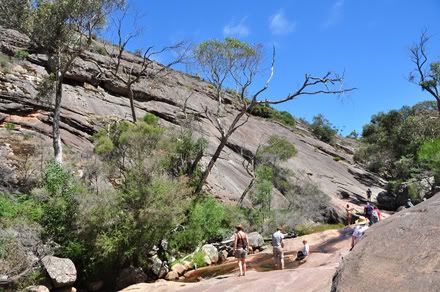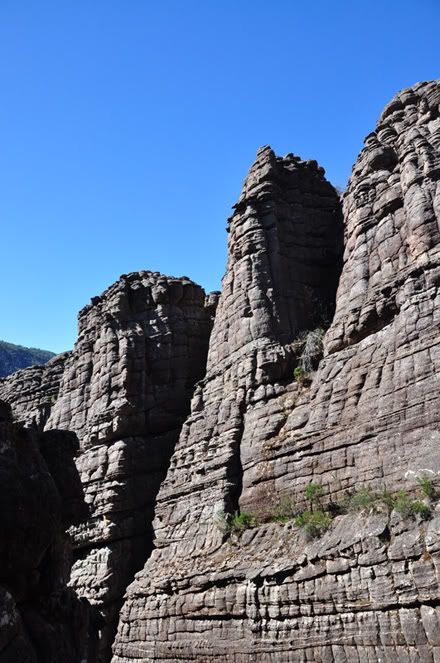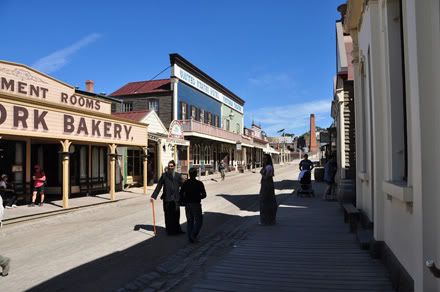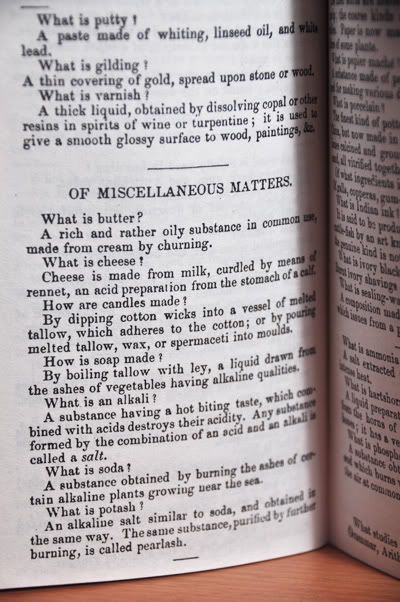We arrived around 2pm and promptly chose the longest bushwalk available considering the timeframe we had to work with (sunset wasn't til around 8.30pm). This was the walk to the Pinnacle, described by the sign as suitable for fit and energetic walkers, involving slippery rock surfaces and some rock hopping. Bring two litres of water per person. We worriedly added a bottle of grape Gatorade to our meagre 750ml each and decided that was enough. A new paragraph and a bit of caps lock is required to emphasise my next point:
2.2 litres of water between two people is NOT enough.
BRING WHAT THE SIGN TELLS YOU TO BRING.
We rationed our water and survived without any horribly worrying signs of dehydration, but I definitely won't be risking that again.
The walk begins along a pleasant shady path which climbs in a misleadingly relaxed manner. A few wandering stairs here and there, and you reach the Venus Baths. This consists of some smooth rock from which you may slide down novel distances of around 1m, propelled by whatever water there is at the time. It was a bit dry when we visited, but I imagine it would be lush after rain. The attraction of the baths is heightened by the fact that is is bordered on one side by an imposing rock slope which looks like a normal rock slope that accidentally got skewed in photoshop. You may feel tilty.

The Venus Baths
A few unremarkable kms later you reach the Wonderland Carpark, mentioned here because there is a dunny on the other side of it, with some rainwater to wash your hands (not for drinking).
After the carpark, the track gets serious about being uphill. There are steps upon steps, rock steps and metal steps and narrow steps where only one foot fits at a time. The track then split and we took the way to the Grand Canyon. The landscape changes drastically upon entering it, and we got to walk on relatively level ground for a few hundred metres surounded by great big rocks that look like compressed cake topped by crazy abseilers.

The Grand Canyon
There really were a lot of rocks. The bush and trees would frequently be interrupted by large sandstone flats, making the landscape continuously interesting. Chris said they reminded him of a mountain walk he did in Queensland, but I hadn't been in anything similar before. We agreed that the awesomeness of the area would have been breathtaking if it weren't for the fact that we could hardly breathe as it was from the aerobic activity required to walk through it. We also found as we went along that many of the signs indicating a destination and approximate distance (eg. Pinnacle .7km) appeared to be underestimating the distances written on them. This was rather discouraging but by that time there wasn't much alternative to going forward.
Much struggle and a bit of crawling later, we reached the Pinnacle! The views over the many unfenced cliffs were duly satisfying. Halls Gap, Lake Bellfield, some pinkish mountains surrounding the valley and lots of trees. We sat around admiring the view and forgetting to take photos. It was good.

This photo is only a part of it and does not depict the view at all, and has been posted because the people in it give a good idea of the scale.
We got lost on the way down and deviated a bit from the track because of insufficient yellow arrowing. Luckily we hit an alternative route down and we continued on our way. The walk down was a breeze by comparison, though perhaps a bit long. We arrived back at Halls Gap by 8.
Quick notes about the Pinnacle track:
• The walk (to both the Pinnacle and Chatauqua Peak) begins at Halls Gap carpark near the swimming pool. Walk past that, then across the little bridge to your right, turn left into the tennis courts, and walk through the botanic gardens. You'll find signs from there, and yellow arrows will be painted on the rocks later on to direct you.
• If you have a car, you can start the Pinnacle walk at the Wonderland carpark, which will cut about 5km from your travels.
• Grippy shoes and sunscreen are a MUST.
• Bring 2L of water per person!



